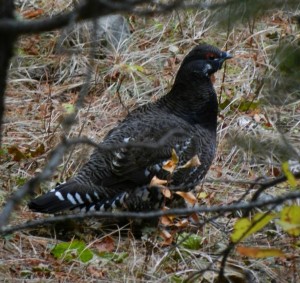
News/Reports
Blue/Dease River ER #58 Overview: Biological and Physical
Original Purpose: To establish a research area containing a variety of communities in the Boreal White and Black Spruce Zone.
Physical:: The reserve lies on a plain of low relief in the Liard River drainage. Micro-relief is provided by many glacial features, oriented in an east-west direction, including eskers, drumlins and morainal landforms. These show prominently on air photos. The present surface is largely the product of glacial processes, and post-glacial erosion is seen only in a few meters of down-cutting by small streams. Two lakes and several wetlands are present.
See the full PDF from BC Parks: bludease
Biological: A 30,500 ha fire (R90093) burned the eastern 65% of the reserve in August 2010.
Despite having little elevational relief, the reserve displays a variety of habitats. This is attributable to various slope exposures on landforms such as eskers, an array of moisture conditions from lakeshores to gravely drumlins, and the historical occurrence of wildfire.
Treeless wetlands include sedge-dominated marshes and fens, as well as seepage areas dominated by northern golden-saxifrage, far-northern buttercup, and aquatic mosses. Two tamarack-scrub birch-willow types are present, one in fen situations associated with water sedge, the other in less saturated environments having ground cover of red bearberry and moss. Black spruce bog forest, characterized by Labrador tea, cloudberry, red bearberry, and moss is also present.
Upland forest communities occur in a complex mosaic. Typical white spruce stands have ground cover dominated by
and moss while wetter sites have those species plus some black spruce, scrub birch, and Labrador tea. Lodgepole pine woods occur on well-drained eskers and drumlins. In the driest sites the typical
To establish a research area containing a variety of communities in the Boreal White and Black Spruce Zone.
sites the pine is mixed with white spruce and understory representatives are arctic lupine and mosses.
Mammals or their sign noted here include Moose, Wolf, Black Bear, AmericanMarten, Snowshoe Hare, and Red Squirrel. Willows have been heavily browsed by Moose. Among birds, Spruce Grouse, Gray Jay, Three-toed Woodpecker, Yellow-rumped Warbler, Dark-eyed Junco, and Pine Siskin have been recorded.
SCI ENTI FI C NAM ES OF SPECI ES M ENTI ONED I N THE BLUE/DEASE RI VERS ER ACCOUNT
Flora:
bearberry, red fruit (Arctostaphylos rubra)
birch, scrub (Betula nana)
buttercup, far-northern (Ranunculus hyperboreus)
cloudberry (Rubus chamaemorus)
fescue, Altai (Festuca altaica)
Labrador tea (Ledum groenlandicum)
lingonberry (Vaccinium vitis-idaea)
lupine, arctic (Lupinus arcticus)
pine, lodgepole (Pinus contorta)
saxifrage, northern golden (Chrysosplenium tetrandrum)
sedges, (Carex sp.)
sedge, water (Carex aquatilis)
spruce, black (Picea mariana)
spruce, white (Picea glauca)
tamarack (Latrix laricina)
willow (Salix sp.)
willow, Bebb’s (Salix bebbiana)
Fauna:
Bear, American Black (Ursus americanus) Grouse, Spruce (Falcipennis canadensis)
Hare, Snowshoe (Lepus americanus) Jay, Gray
(Perisoreus canadensis) Junco, Dark-eyed (Junco hyemalis)
Siskin, Pine (Carduelispinus) Marten (Martes americana)
Moose (Alcesamericanus)
Squirrel, Red (Tamiasciurus hudsonicus)
Warbler, Yellow-rumped (Dendroica coronata) Wolf, Grey (Canislupus)
Woodpecker (Picoides dorsalis)

